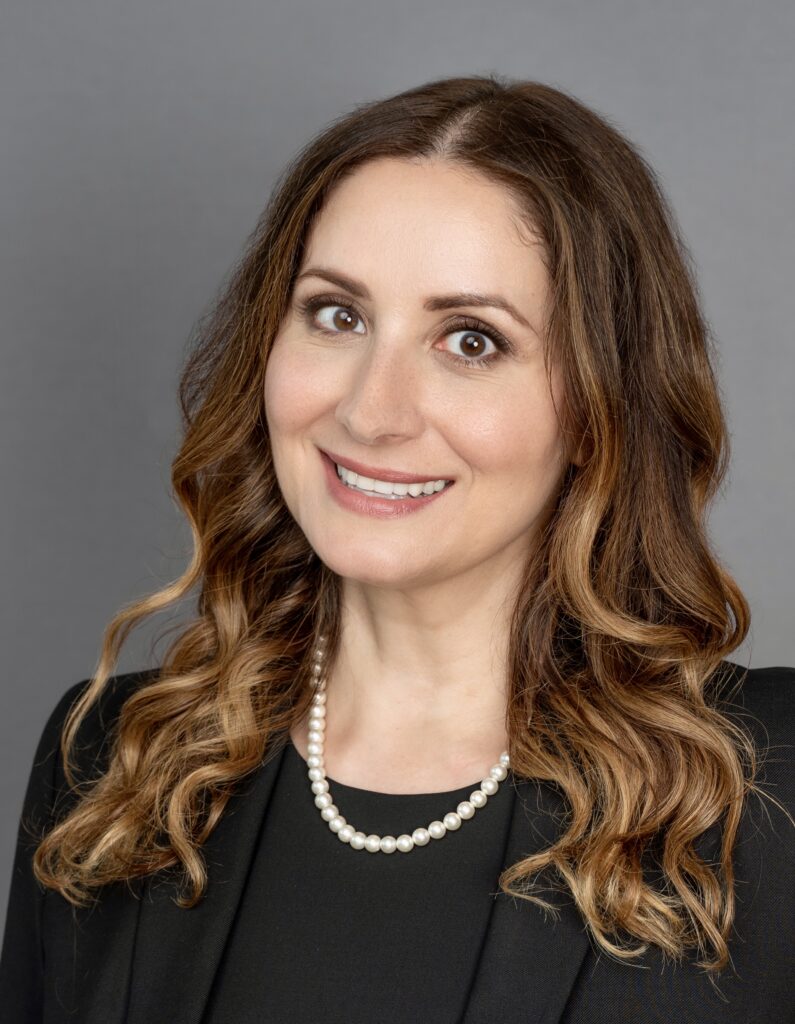As the biggest wealth transfer in history takes hold, the stakes for family offices and family enterprises have never been greater. PwC Canada is leveraging its deep network of Canada’s iconic business families to facilitate peer-to-peer education and networking.
Canadian Family Offices sat down with Hadielia Yassiri, National Leader and Partner with PwC Canada’s Family Enterprise Services, and Elise Hochberg, senior manager in the practice and a third-generation member of her family’s business, as PwC Canada prepares to relaunch its NextGen Connect program.
What does NextGen mean?
Family Enterprise Advisors, see four paths to success among the next-generation family business leaders:
The steward. May not work in the family business but is focused on protecting the profitability of the family firm and ensuring its long-term sustainability. From a practical point of view, this family member may serve on the Family Council and Family Foundation.
The entrepreneur. May set up their own ventures outside the family’s business, using the skill set and experience of having an entrepreneurial spirit of the family business. What we call “the family enterprise DNA”.
The intrapreneur. This person uses the family business as the foundation for their own ventures within the family enterprise. For example, this person may leverage resources including human capital and industrial know-how to diversify the family’s business or portfolio of assets.
And then, there’s the transformer. Take on the task of driving significant change in the family firm, with the scope and support to do so. An example is a Canadian Family Business that’s in its fourth generation that has transformed from being in the bakery business to owning a global portfolio of active businesses and real estate assets.
Hadielia Yassiri
What philosophy guides the PwC family enterprise practice?

We meet with client families with the following in mind:
- The entire family is our client. This means that all family stakeholders engaged in the process are our clients and we are available as a resource and a sounding board for each stakeholder for the entire duration of our engagement
- The journey is challenging, as the engagement addresses human dynamics as well as governance and continuity decisions. We create an environment where each stakeholder has a voice and a seat at the table and we support them in navigating difficult conversations and processes
What key challenges do next-gen family enterprise members face?
To answer this question thoughtfully, we ought to consider whether it’s the second generation, that is currently working with or inheriting the business from the founder, or the third generation and beyond. We also must consider whether they are actively involved in operations because they may face different challenges than family members who are shareholders but not operators.
We see that the generation that immediately follows or works with the founder faces the challenge of balancing the winning formula that allowed the business to grow to that point against opportunities for strategic and new directions in the marketplace. Next gen members must balance honouring the founder’s legacy while being seen as valuable and contributing operators.
Another challenge is when a lack of continuity planning results in our engagement becoming a succession exercise. Although succession and continuity often are used interchangeably, succession is a tactical approach that is often tied to a specific event, such as the death or the disability of the owner operator. Continuity planning ensures the long-term resilience of the system and takes into strategic consideration the business ownership, governance, family relationships and shared wealth. It is a broader process than just who takes over a leadership role as an operator. Continuity includes preparing the next generation for leadership, establishing governance forums including a Family Council, Board of Advisors and Shareholder Agreements, and addressing how family members manage conflict and legacy.
How do you help family enterprises address these challenges?
We do not make assumptions about the state or goals of the client’s family. The first question we ask is, “Do you want to be an enterprising family together? Why or why not?” We help the founder hear the views of the other family members; we provide a forum for voices to be heard in a supportive and safe environment. This facilitation process leads to the establishment and practice of the Family Council, as a foundational tool of governance. Within the Family Council meetings, we may begin addressing technical challenges and options including how to structure shareholding agreements, and operational decisions including a family member at the helm or professionalizing the business. These questions and decisions are intertwined, and families do not know how to disentangle them. We speak of the Three-Circle Model where we disambiguate the domain of personal and family dynamics, oversight for the Board of Advisors or Directors and business operations. Providing this context and a forum for facilitation allows the family members to have a holistic view of the enterprise system and to see how a decision or a challenge in one domain can flow into another domain.
We help professionalize business families’ relationships and cultivate their readiness for transition by assessing and planning for:
- Continuity and succession planning (stewardship, leadership development, mentorship, roles &responsibilities, Board advisory)
- NextGen leadership support and learning
- Governance in the family, business and ownership systems
- Creating and implementing policies (education, employment, dividend, etc)
- Establishing rules of engagement for meetings and conflict resolution
How do you facilitate decision making? Is it unique to each family? Are there fundamental steps that apply to all families?
The tools of governance allow families to make decisions. Governance is simply the policies and procedures that we deploy to professionalize the family enterprise and align stakeholders. We begin with contextualizing in which domain a decision sits – it can be a decision that affects both a family and the operations, for example family employment policies or compensation policies. Although the science and tools of governance are used in each of our client engagements, each family is unique in its DNA of entrepreneurial advantages and challenges. Our approach is a hybrid of situational support and facilitation that marries the rigours of the family enterprise advisory discipline.

What are some of the key trends you see in family enterprise?
One trend is professionalization: families are moving away from “kitchen table governance” toward more formal boards, shareholder agreements and clear decision-making protocols. Another trend is values-based investing: families would like the management of their wealth portfolio to reflect their identity—whether that’s through philanthropy, ESG investing or impact capital.
While we are not involved in investing, we see the need for a policy to help everyone align on wealth and investment approaches. This applies to philanthropy as well. It means helping the family understand each other’s values and reasons for engaging in charitable endeavors.
We worked with a second-generation family where siblings had to make investment decisions with respect to a $200 million plus trust who could not have been more different in terms of personality and risk appetite. Our engagement included each sibling learning about individual relationships to wealth and investment risk appetite as well as other family members’ perspectives.
Is the great wealth transfer a key conversation with families today?
Absolutely. In Canada, we’re looking at trillions moving hands over the next decade. But we find the conversation is shifting from how much money will transfer to how well it will transfer. Families are asking: How will the wealth affect our family’s harmony? Will my children be prepared to inherit leadership not just assets? Will they know how to make decisions together?
For example, we worked with a multi-generation manufacturer where the patriarch’s biggest concern wasn’t the tax bill—it was whether his grandchildren would share the same commitment to the business. Structuring the transfer was straightforward; preparing the family for it was the real work.
Commitment doesn’t have to be to operations. It can be about family harmony, legacy, stewardship, learning, expanding the portfolio or starting something new.
What differences do you see between the generations, and do you change your approach when dealing with G1 vs. G2, G3?
Yes. G1 founders often define success as control and security. G2 usually wants a voice at the table—they’re loyal but also keen to modernize. G3 tends to prioritize collaboration, purpose and flexibility and this view is not only based on a person’s position in a multigenerational business family, but on the differences amongst Gen X, Millennials and Gen Z.
Our approach shifts accordingly. With G1, we focus on building trust so that letting go won’t mean chaos or a disregard for stewardship. With G2, we emphasize governance frameworks that allow shared leadership and managing the goals and fears of multiple stakeholders. With G3, we lean into purpose—asking how their interests and strengths can be deployed to preserve or revolutionize the family enterprise.
We hear a lot about the third-generation curse. What can families do to avoid it and ensure family wealth is sustainable?
The “shirtsleeves to shirtsleeves” proverb may be famous but it’s not quite true. Enterprising families often carry that entrepreneurial outlook and know-how, the “familiness advantage.” By the third generation, we see that the business may be sold or the nature of the business may change, but the family members continue to be entrepreneurial. With respect to a curse, it burdens any generation, and families can avoid it by focusing on education, governance and culture. The key isn’t just teaching technical skills—it’s fostering shared identity and stewardship.
We work with one family that institutionalized family retreats every summer where values, collective investments and business updates are discussed together. That ritual creates a sense of belonging that outlasts any single leader. Another family created a “family constitution” that defined how they make decisions, resolve disputes and support entrepreneurial ventures of next-gen members.
How do PwC’s next-generational educational resources support family enterprise clients?
At PwC we design tailored learning journeys for next-gens, covering governance, financial literacy, entrepreneurship and leadership skills. It’s not just theory: we often combine technical workshops with experiential learning—shadowing boards, participating in family council meetings, working through case studies of Canadian family businesses and supporting them building up technical skills through various curriculums including the Family Enterprise Canada and Institute for Corporate Directors
Are next generation family leaders prepared for the future? Are you optimistic or pessimistic about the transition set to take place in family offices across Canada?
Many next-gens are better educated, more globally connected and more value-driven than ever. They’re pushing for innovation, diversity and impact—which is encouraging.
But preparation varies widely. Some families invest heavily in readiness; others assume osmosis will do the job. The danger is that wealth without preparation can be destabilizing.
What makes us optimistic is seeing Canadian next-gens step up in tangible ways: for instance, daughters in manufacturing families who are taking on CEO roles that their fathers hadn’t initially envisioned for them, or third-generation cousins who are diversifying the family office into sustainable real estate projects. These examples demonstrate that the “curse” can be rewritten into a story of renewal.
Disclaimer: This story was created by Canadian Family Offices’ commercial content division on behalf of PwC Canada, a member and content provider of this publication.

